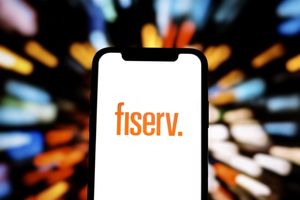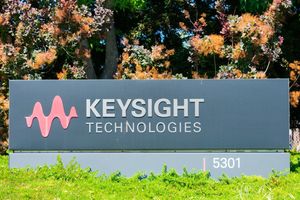Financial News
Ligand Pharmaceuticals Soars to New Heights: A Deep Dive into its 52-Week High

San Diego, CA – November 6, 2025 – Ligand Pharmaceuticals (NASDAQ: LGND) has recently captured the financial spotlight, with its stock hitting a remarkable 52-week high of $197.78 on November 6, 2025. This significant milestone comes on the heels of a robust third-quarter 2025 earnings report that dramatically exceeded analyst expectations, coupled with an optimistic revised full-year financial guidance. The surge in Ligand's valuation reflects burgeoning investor confidence in its unique royalty-generating business model and its strategic prowess in the biopharmaceutical landscape.
The immediate implications of this achievement are profound. For Ligand, it solidifies its position as a compelling investment in the biotech sector, driven by a de-risked approach to pharmaceutical innovation. The elevated stock price enhances the company's market capitalization, providing greater flexibility for future strategic initiatives, including further acquisitions of royalty streams and investments in new technologies. For the broader market, Ligand's success serves as a powerful validation of the "asset-light" royalty aggregation model, potentially drawing more attention and capital to similar business structures within the industry.
Detailed Coverage of the Event
Ligand Pharmaceuticals' journey to its 52-week high has been a carefully orchestrated ascent, driven by a series of strategic moves and impressive financial performance. The stock's peak on November 6, 2025, reaching $197.78, was primarily catalyzed by the announcement of its third-quarter 2025 financial results before market open.
Leading up to this moment, the company demonstrated consistent positive momentum. In August 2025, Ligand completed a capital raise of approximately $385 million, signaling strong investor appetite. This was followed by a wave of analyst upgrades and increased price targets from firms like Royal Bank of Canada, Wall Street Zen, HC Wainwright, and Oppenheimer throughout August and September, reflecting growing confidence in Ligand's trajectory. By October 2025, LGND's stock began consistently hitting new 52-week highs, climbing steadily from $186.48 on October 17th to $191.03 on October 28th. Key corporate actions during this period included a $460 million convertible notes offering, bolstering its financial liquidity, and the FDA approval of Lasix ONYU, an at-home furosemide injection for heart failure patients, which utilizes Ligand's drug-device combination.
The decisive moment arrived on November 6, 2025, with the Q3 earnings report. Ligand reported total revenues and other income of $115.5 million, significantly surpassing analyst estimates of $59.88 million. Non-GAAP earnings per share (EPS) soared to $3.09, well above the estimated $1.96. This exceptional performance was largely attributed to a 47% growth in portfolio royalty revenue, particularly from products like Travere Therapeutics' (NASDAQ: TVTX) Filspari and Merck/Verona Pharma's (NASDAQ: VRNA) Ohtuvayre. The company also recognized $24.5 million from an out-license of Zelsuvmi and a $28.6 million gain from the sale of the Pelthos business.
Key players in this success story include Ligand Pharmaceuticals Incorporated (NASDAQ: LGND) itself, under the leadership of CEO Todd Davis and CFO Tavo Espinoza, who have effectively communicated the company's strategic vision and financial health. The aforementioned analysts and brokerages played a crucial role in shaping positive market sentiment, while institutional investors, holding approximately 91.28% of the company's stock, demonstrated unwavering confidence. The initial market reaction on November 6th was "immediately and unequivocally positive," with LGND shares rising in pre-market trading, building upon weeks of steady gains.
Companies That Might Win or Lose
Ligand Pharmaceuticals' achievement of a 52-week high, driven by its distinctive royalty and licensing model, sends ripples across the biopharmaceutical industry, creating potential winners and posing nuanced challenges for others.
The most direct beneficiaries are Ligand's partners – pharmaceutical companies that have licensed its proprietary technologies like Captisol (which enhances drug solubility and stability) and OmniAb (a platform for discovering fully human antibodies), or those with partnered programs generating royalties. Major pharmaceutical players such as Amgen (NASDAQ: AMGN), Merck (NYSE: MRK), Pfizer (NYSE: PFE), Gilead Sciences (NASDAQ: GILD), Takeda (NYSE: TAK), and Eli Lilly (NYSE: LLY), which have leveraged Captisol in their drug development, see the value of Ligand's technology further validated. The success of drugs like Remdesivir (using Captisol) directly contributes to Ligand's royalty revenues, reinforcing the symbiotic relationship. Specific partners like Travere Therapeutics (NASDAQ: TVTX) benefit from the strong performance of Filspari, and Verona Pharma (NASDAQ: VRNA) from Ohtuvayre. Recordati (BIT: REC) benefits from Qarziba, and Castle Creek Biosciences from Ligand's investment in its D-Fi gene therapy. Furthermore, the FDA approval of SQ Innovation's Lasix ONYU, utilizing Ligand's drug-device combination, highlights the broad applicability and value of its platforms. Ligand's robust financial health and enhanced credibility make it an even more attractive partner for future collaborations, potentially leading to more licensing agreements and funding opportunities for companies seeking to advance their drug pipelines.
Companies with similar "asset-light," royalty-driven business models also stand to win. Ligand's success validates this approach in the biopharmaceutical sector. Halozyme Therapeutics (NASDAQ: HALO), which licenses its ENHANZE® drug delivery technology, is often cited as a comparable company. LGND's strong performance can positively influence investor sentiment towards Halozyme and other firms primarily focused on intellectual property licensing and royalty collection, suggesting the viability and profitability of such models. This could lead to increased investor interest and potentially higher valuations for these specialized biotech firms.
On the other hand, traditional drug developers, heavily invested in in-house R&D and commercialization, might face indirect pressure. Ligand's model, which minimizes risk by letting partners handle the expensive and lengthy development process, contrasts sharply with the high R&D burn rates and long development timelines of conventional pharmaceutical companies. Ligand's high could prompt investors to re-evaluate the risk/reward profiles of these traditional developers, potentially leading to a slight cooling of interest in those without compelling late-stage assets. Competitors offering alternative drug delivery or antibody discovery platforms might also face increased scrutiny or competition if Ligand's technologies gain further prominence and market share. While direct "losers" are less clear-cut, the event underscores a potential shift in investor preference towards diversified, de-risked biotech investment models.
Wider Significance
Ligand Pharmaceuticals' ascent to a 52-week high on November 6, 2025, is more than just an individual stock's triumph; it serves as a powerful testament to several broader, evolving trends within the biopharmaceutical industry. Its success validates the increasing prominence of the royalty and licensing model, signaling a strategic pivot for many in the face of escalating R&D costs and complex regulatory landscapes.
This achievement firmly embeds Ligand within the wider industry trend of de-risking innovation. With the average cost to develop a new drug soaring and success rates remaining low, companies are increasingly seeking ways to participate in pharmaceutical advancements without shoulder the full financial burden and inherent risks of traditional drug discovery and development. Ligand's model, which focuses on developing and licensing proprietary technologies like Captisol and OmniAb, allows it to generate revenue through royalties, upfront payments, and milestones across a diverse portfolio of therapeutic areas. This "asset-light" approach appeals to investors looking for exposure to biotech innovation with a more favorable risk profile. The surge in royalty funding, seen as a non-dilutive capital source, is a crucial trend enabling companies to retain operational control while securing necessary financing.
The ripple effects on competitors and partners are substantial. For Ligand's existing partners, the stock's performance enhances the perceived value and reliability of Ligand's technologies, making it an even more attractive collaborator for future drug development. This can lead to more favorable licensing terms for Ligand and increased demand for its platforms. For competitors, particularly those with traditional, capital-intensive R&D models, Ligand's success might prompt a re-evaluation of their own strategies. It highlights an alternative, potentially more efficient path to market and profitability, encouraging smaller biotech firms to consider similar asset-light approaches or fostering the emergence of new royalty aggregators.
From a regulatory and policy standpoint, Ligand's success underscores the critical importance of a robust intellectual property (IP) framework. Its business model is fundamentally reliant on strong patent protection and efficient licensing regulations. Any shifts in patent laws or their enforcement could directly impact its revenue streams. While Ligand itself isn't directly involved in clinical trials, its financial health is intrinsically linked to its partners' abilities to navigate complex drug approval processes by agencies like the FDA and EMA. Efficient regulatory reviews and expedited pathways for breakthrough therapies directly benefit Ligand by bringing royalty-generating products to market faster.
Historically, Ligand's trajectory draws parallels with the success of Royalty Pharma (NASDAQ: RPRX), which pioneered the model of acquiring royalty streams on approved and late-stage pharmaceutical products. Royalty Pharma's long-term success has demonstrated the potential for high returns with lower risk in this specialized niche. Ligand's current performance further solidifies this precedent, illustrating how specialized financial structures can effectively bridge funding gaps in biopharma, allowing intellectual property holders to monetize their innovations and reinvest in new research. This historical context suggests that as R&D costs continue to climb and the industry seeks more flexible financing, the royalty and licensing model, championed by Ligand, is poised for continued expansion and influence.
What Comes Next
Following its impressive ascent to a 52-week high, Ligand Pharmaceuticals (NASDAQ: LGND) stands at a pivotal juncture, with both significant opportunities and inherent challenges shaping its short-term trajectory and long-term strategic outlook.
In the short term, Ligand is poised to capitalize on its current momentum. Investor confidence, buoyed by the strong Q3 2025 earnings and raised full-year guidance, is expected to remain robust. Upcoming catalysts, such as the FDA's PDUFA date of January 13, 2026, for Filspari's second indication, FSGS, could further propel the stock if successful, potentially doubling the product's sales. A potential REMS modification for Filspari could also streamline patient monitoring, improving market access. Additionally, Agenus (NASDAQ: AGEN) is expected to initiate its Phase III study in Q4 2025, which could be another near-term driver. However, investors should remain vigilant regarding market valuation, as some analyses suggest the stock might be overvalued compared to its fair value at current levels.
Looking further ahead, Ligand's long-term strategy centers on the continuous expansion and optimization of its royalty portfolio. Management projects an ambitious royalty receipts compound annual growth rate (CAGR) of at least 22% through 2029, with total royalty receipts potentially reaching approximately $285 million. This growth is underpinned by a diversified portfolio of over 30 commercial programs across various therapeutic areas, marketed in more than 70 countries. Strategic pivots will likely involve continued investment in acquiring new royalty streams and licensing its proprietary technologies, reinforcing its "infrastructure-light" model. The company's strong cash position, bolstered by recent capital raises like the $460 million convertible notes offering, provides the financial flexibility to pursue these strategic acquisitions and investments. Ligand's recent acquisitions, such as Apeiron Biologics, and strategic divestitures/spinoffs like Primrose Bio and the merger of Pelthos Therapeutics with Channel Therapeutics, demonstrate an ongoing commitment to optimizing its asset portfolio and focusing on high-value royalty streams.
Market opportunities for Ligand are substantial, driven by the growing demand for royalty financing in a challenging biotech funding environment. Industry trends favoring personalized medicine, rare diseases, and collaborative, risk-sharing partnerships align perfectly with Ligand's model. However, challenges persist, including the inherent dependence on partner success, intense competition for attractive royalty acquisition opportunities, and the ever-present regulatory hurdles that can delay drug approvals. Intellectual property risks, such as patent expirations and litigation, also remain a constant consideration. Ultimately, a bullish scenario sees Ligand exceeding its projected CAGR, fueled by successful commercialization of key assets and strategic expansions. A neutral outcome would involve steady performance aligning with current projections, while a bearish scenario could emerge from significant partner setbacks, increased competition, or adverse regulatory changes, leading to a re-evaluation of its high valuation.
Comprehensive Wrap-up
Ligand Pharmaceuticals' (NASDAQ: LGND) recent achievement of a 52-week high is a definitive testament to the efficacy and growing acceptance of its unique royalty aggregator business model within the dynamic biopharmaceutical landscape. This milestone, with the stock closing at $197.78 on November 6, 2025, underscores a period of exceptional financial performance and strategic foresight, firmly establishing Ligand as a significant player in the biotech investment arena.
The key takeaway from this event is the powerful validation of Ligand's de-risked approach. By focusing on acquiring or financing biopharmaceutical assets in exchange for royalty streams and licensing its proprietary technologies, Ligand has successfully navigated the high costs and inherent uncertainties of traditional drug development. Its robust third-quarter 2025 earnings, significantly surpassing analyst expectations, and the subsequent upward revision of full-year guidance, were primarily driven by a remarkable 47% growth in portfolio royalty revenue from key products like Filspari and Ohtuvayre. This demonstrates that an "asset-light" strategy, diversified across numerous therapeutic areas and partnerships, can yield substantial and sustainable high-margin growth.
Looking ahead, the market's assessment of Ligand remains overwhelmingly positive, with analysts maintaining strong buy ratings and projecting further upside. The company's forecast of at least a 22% compound annual growth rate (CAGR) in royalty receipts through 2029 highlights a clear path for sustained expansion, supported by a robust pipeline of commercial programs and late-stage development assets. Ligand's strong financial health, characterized by significant cash reserves, provides the strategic flexibility to continue its business development activities, including targeted acquisitions and new partnerships, which are crucial for fueling future growth.
The lasting significance of Ligand's success lies in its role as a blueprint for alternative investment in biotech. It offers investors a compelling opportunity to participate in the industry's innovation and growth without the concentrated binary risks typically associated with single-drug development. Ligand has effectively transformed into a profitable, infrastructure-light organization, showcasing how specialized financial structures can unlock value from pharmaceutical intellectual property.
For investors, vigilance in the coming months will be key. Watch for the sustained performance of core royalty-generating products, the success of new business development initiatives and acquisitions, and the progression of late-stage pipeline assets. Specific milestones, such as the FDA's PDUFA date for Filspari's second indication in January 2026, and the topline results for Palvella TOIVA in mid-December 2025, will be critical. While recent one-time gains contributed to Q3 results, ensuring that recurring royalty streams can independently sustain the raised guidance is important. Finally, closely monitor market valuation, as some analyses suggest a potential for overvaluation, necessitating careful consideration of entry points. Ligand's journey to its 52-week high is a powerful narrative of strategic success, but its continued ascent will depend on its ability to consistently execute its unique model and capitalize on future opportunities.
This content is intended for informational purposes only and is not financial advice
More News
View More




Recent Quotes
View More
Quotes delayed at least 20 minutes.
By accessing this page, you agree to the Privacy Policy and Terms Of Service.



